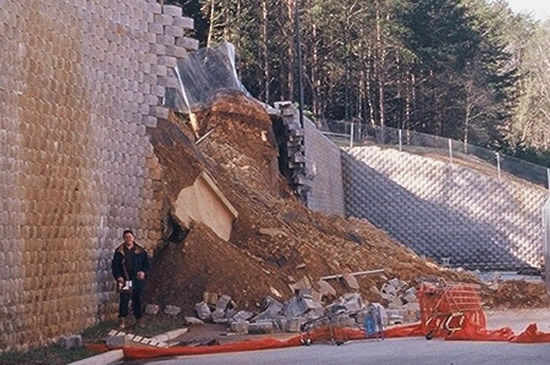The Geosynthetic Institute has a strong background in providing education and resources on all geosynthetic applications and particularly on MSE walls. The next GSI Webinars exemplify the quality offered in GSI’s webinar series. The next offerings:
- April 25, 11:30 am – 1:00 pm (EDT): MSE Wall Remediation and Monitoring
- May 9, 11:30 am – 1:00 pm (EDT): MSE Wall Inspection
These live presentations are part of GSI’s annually renewed series of MSE wall webinars, each of which is a standalone presentation. As a series, though, they give a comprehensive view of some of the most pressing (and helpful) discussions and strategies in work with mechanically stabilized earth designs, technologies, and applications. Course descriptions and webinar details are below.

Webinar Cost
GSI Members – $200.00
Non GSI Members – $250.00
The education is worth 1.5 PDHs (providing completion of a 10-question multiple choice test).
Register for the webinar online
MSE WALL REMEDIATION – APRIL 25
The GSI database of failed MSE walls indicates that 99 out of 320 failures with geosynthetic reinforcement were caused by excessive deformation. Of these 99, approximately 30 were remediated before they actually collapsed. This webinar presents methods of mechanical strengthening the deformed walls (using ground anchors, rock bolts or soil nailing) and also the potential of using dewatering methods (using horizontal drains, pumped vertical wells and combined systems).
The webinar then presents details of 10 of the remediated walls. All of them were remediated using mechanical strengthening. Within the group were ground anchors (5), soil nails (4), and rebuilding (1). The cost of the remediations varied from 1.05 times the original cost to 3.50 times. The rebuild case history was 4.66 times the original cost.
RELATED: MSE Wall Failures vis-à-vis the Lack of Geotechnical Filters
Monitoring of the original or remediated walls is suggested in the context of standard surveying, lazer/radar/lider methods, slope inclinometers, piezometers and/or continuous deformation gauges. Criteria on suggested wall deformation concludes the webinar.
Webinar participants will appreciate that the time between visual observation of a deforming MSE wall and actual collapse is critical insofar as remediation is concerned. A review of ground modification methods will be presented. Ten case histories of wall remediation will be reviewed, Since the acceptable amount of wall deformation is subjective, the use of monitoring is recommended. Participants will learn what is available in this regard.
Register for the webinar online
MSE WALL INSPECTION – MAY 9
The inspection (aka, monitoring) of MSE wall, berm, and slope construction using geosynthetic reinforcement is absolutely essential for providing a safe and durability system. Such inspection includes three distinct time frames: before, during, and after construction. This webinar is focused on what is felt to be the proper state-of-the-practice in this regard. Integral to this task is the contractual method, the various organizations involved, and the specific inspectors tasks. The materials involved (soils, geosynthetics, and facings) will be illustrated, as will be typical inspection costs.
Specific activities before construction (foundation conditions, water regimes, materials conformance testing, meetings and documentation); during construction (leveling pad, drainage, face forming, lift progression and finished soil surface); and after construction (final structure, as-built survey, and periodic future inspections) will be emphasized. An inspector certification program will be described.
Webinar participants will learn about contractual variations used in the construction of MSE structures with geosynthetic reinforcement. They will also learn about types and conformance testing of materials used in their construction. The major focus, however, is to learn an inspectors duties and obligations before, during and after construction of the MSE system. These separate stages are amply illustrated by many field photos of correct practice.
The implications of a failed MSE structure will be discussed from the vantage point of remediation costs, negative publicity and loss of confidence in this type of wall, berm, and slope system.
Learn more about the Geosynthetic Institute and its resources and activities at www.geosynthetic-institute.org.
View other webinars from GSI’s Bob Koerner at www.geo-u.com.











